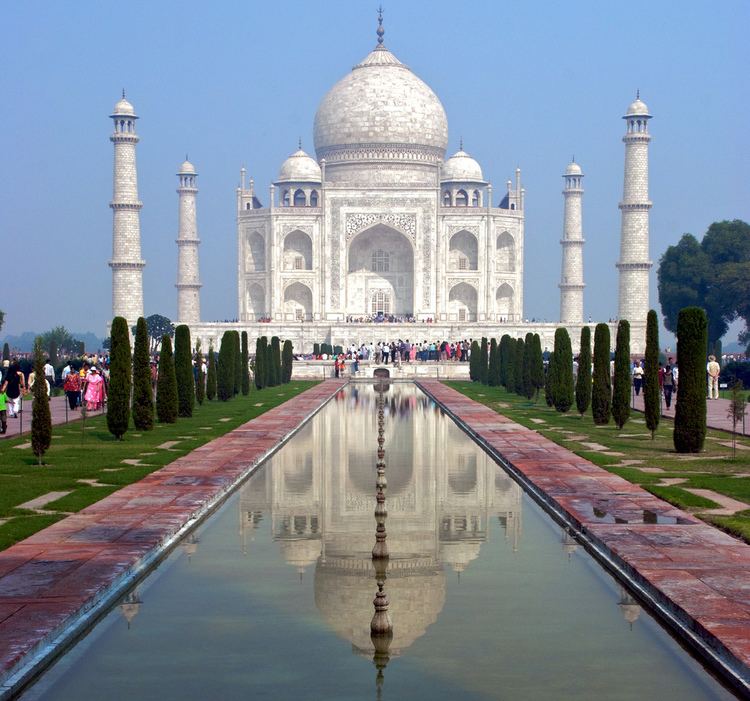 | ||
Makrana marble is a type of white marble of high quality, popular for use in sculpture and building decor. It is mined in the town of Makrana in Rajasthan, India, and was used in the construction of several iconic monuments such as the Taj Mahal in Agra and the Victoria Memorial in Kolkata.
Contents
Geology
In the Makrana area, marble is found as five steeply-dipping bands. They form part of the Ajmer Formation of the Delhi Supergroup, which is a sequence of sedimentary rocks that was deposited in the Delhi Basin during the Proterozoic. About 1450 Ma (million years ago) these rocks were affected by the Delhi Orogeny, causing the metamorphism that transformed the original limestones to marble and the folding that caused the steep dip and the current outcrop pattern.
Properties
Makrana is regarded as the oldest place in India with a marble quarry. Upon mining, Makrana marble is not subjected to any form of treatment, but used in cutting and chiseling straight away. Makrana marble is one of the two calcitic marble varieties in India, with all others being dolomitic. It has two varieties: white and albeta. The quantity of marble reserves in the region is estimated to be 55 million tonnes by the state government. About 120 thousand tonnes of the marble are produced annually from over 400 mines in the region.
Makrana marble has high percentage of calcium and is therefore resistant to water seepage. The water absorption of Makrana marble is said to be the lowest among all types in India, and the marble is claimed to contain 98 percent of calcium carbonate and only two percent of impurities. The different shades of Makrana marble are pure white, white with grey shades and white with pink shades, depending on the level of impurities. The close interlocking property of the marble makes it strong, hard and translucent. It is said to retain its shine and white color for a long period of time.
Notable monuments and buildings
Prominent buildings/monuments that used Makrana marble in their construction are:
Use and export
Marble from Makrana is exported overseas mainly to the Persian Gulf countries, the European Union, Southeast Asia, Canada, Pakistan and Russia. In India, it is mainly used for handicraft and sculpture work, apart from construction of buildings. Makrana marble was given the geographical indication status in 2015 by the Geographical Indication Registry, Chennai.
